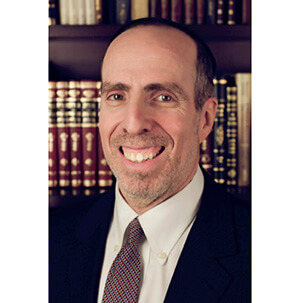
This week at Shaarei Orah, sadly, our minds shift to hilchot aveilut. We are in the middle of shiva for our beloved member Avi Gilad of blessed memory. Our discussion should serve to honor the memory of Avi, who loved Hashem, his family and the communities in which he was a beloved component.
Sephardic and Ashkenazic practice regarding hilchot aveilut is mostly identical. However, we can identify at least 10 significant differences.
1) Mourning (aveilut) observances between death and burial (aninut): This is the subject of a dispute between the Rambam and Ramban. The Rama (Yoreh Dei’ah 341:5) rules in accordance with Ramban that the prohibitions (such as showering) begin at death. Ashkenazic practice accords with the Rama. It is not clear, though, how the Shulchan Aruch rules on this matter and therefore there is a division amongst Sephardic Jews regarding this issue. Rav Ovadia Yosef writes that the practice is to be strict. However, both Egyptian and Moroccan Jews follow the lenient view of the Rambam.
2) Haircutting for women after the end of shiva. Sephardic Jews follow the lenient view of the Shulchan Aruch (YD 390:5) whereas Ashkenazic Jews follow the stricter ruling of the Rama.
3) Sending mishloach manot to an avel: The Rama (YD 385:3) rules strictly even in regard to an avel within the 12-month mourning period for parents. This constitutes the accepted Ashkenazic practice. The position of the Shulchan Aurch is not clear regarding this matter, and once again there is a split of practices among Sephardim. Moroccan Jews adopt the strict ruling of the Rama. However, Rav Ovadia believes that Sephardic Jews may be lenient regarding this matter.
4) Ending time for Kaddish: The Rama (YD 376:4) records the well-known Ashkenazic custom to recite Kaddish for only 11 months. The Mishna (Eduyot Perek 2) notes that reshaim suffer in Gehinnom for 12 months. Ashkenazim refrain from reciting Kaddish the last month so as not to impugn their relatives as being reshaim. Rav Ovadia, by contrast, records the practice to recite Kaddish for 11 months, stop for a week, and then resume the Kaddish until the end of the 12 months. Moroccan Jews follow the Rama with the exception of also reciting the Kaddish on the Shabbat preceding the azkara (yahrtzeit) of the niftar (deceased).
5) Tziduk hadin on a day upon which tachanun is omitted: The Rama (YD 401:6) records the accepted Ashkenazic practice to refrain from saying the tziduk hadin following the burial on days upon which tachanun is recited. Rav Mordechai Eliyahu in his Siddur Kol Eliyahu notes that Sephardic Jews have varied practices regarding this matter and that everyone should follow the practice of their specific Sephardic group. Rav Ovadia writes that the prevailing Sephardic opinion is to follow the Rama regarding this issue (this is also the Moroccan practice as well).
6) Azkara/yahrtzeit in a leap year for someone who died in Adar in a non-leap year: This matter is the subject of a dispute between the Shulchan Aruch and the Rama (Orach Chaim 568:7). Sephardic Jews follow the Shulchan Aruch to observe the azkara during the second Adar, and Ashkenazic Jews follow the ruling of the Rama to observe the yahrtzeit in the first Adar.
7) Shinui makom on Shabbat: The Shulchan Aruch and Rama (YD 393:4) dispute as to whether an avel should change their seat in the beit knesset even on Shabbat. Rav Ovadia rules in accordance with the Shulchan Aruch that on Shabbat he should sit in his regular seat. Ashkenazim follow the Rama to change the seat even on Shabbat. Moroccan Jews maintain a separate section in the synagogue for mourners on both Shabbat and weekend tefillot. However, on Yom Tov, mourners return to their usual seats.
8) Sephardic practice is to identify the niftar by their mother’s name, whereas the Ashkenazic practice is to mention the father’s name.
9) Sephardic Jews typically serve food at the beit avel to visitors so that they recite each of the brachot to elevate the neshama of the niftar.
10) Sephardic mourners are comforted with the words “min hashamayim tenachamu” and Ashkenazic Jews say “HaMakom yenacheim etchem b’toch she’ar aveilei Tzi’on v’Yerushalayim.”
There are a relatively small number of other variations between Sephardic and Ashkenazic practice regarding avelut, but for the most part the halachot are the same. After all, at the end of the day, we are all am echad, one nation. May the Gilad family find comfort with these words of Torah in honor of their beloved Avi at this distressing time.
By Rabbi Haim Jachter
Rabbi Haim Jachter is the spiritual leader of Congregation Shaarei Orah, the Sephardic Congregation of Teaneck. He also serves as a rebbe at Torah Academy of Bergen County and a dayan on the Beth Din of Elizabeth.









